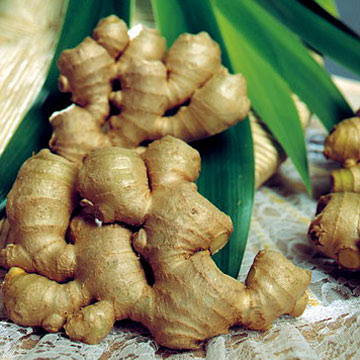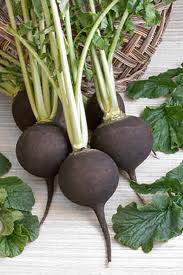Here's some food for thought: Dr. Irwin Bross was director of biostatistics at Roswell Park Memorial Institute in Buffalo, New York. In the 1970s, Dr. Bross headed a project that studied the alarming increase in rates of leukemia. It was called the Tri-State Leukemia Study. His sample used tumor registries from 16 million people from New York, Maryland, and Minnesota. After checking factors as diverse as health history, occupational history, residential history, family background, cause of death for parents and grandparents, exposure to farm animals, pet ownership, whether or not the pets had ever been sick, Dr. Bross came to the conclusion that the main cause of the rising rates of leukemia was medical radiation in the form of diagnostic medical X-rays (Leslie Freeman, ed., Nuclear Witnesses: Insiders Speak Out, New York: Norton, 1982, p. 27).Dr. John Gofman, Professor Emeritus of Molecular and Cell Biology at the University of California at Berkeley, was wondering the same thing in the early 1990s. His research led him to write a 400-page book in which he estimates that "three-quarters of the current annual incidence of breast cancer in the United States is being caused by earlier ionizing radiation, primarily from medical sources." Astonishingly, this isn't even news. "[M]edical science," Gofman continues, "has known for 20 years that ionizing radiation is a prominent and proven cause of breast-cancer" (John Gofman, Preventing Breast Cancer, San Francisco: Committee for Nuclear Responsibility, 1995, p. 303).
Note the size of the study. It was no small sampling. Note the words "prominent and proven." Not surprisingly, Dr. Bross lost his funding from the National Cancer Institute when his study was published in the respected American Journal of Public Health. This despite the fact the Dr. Bross is an eminent researcher who has held prestigious positions at major medical centers including Roswell Park and John Hopkins. From Reclaiming our Health by John Robbins, p. 233-234(which also cites the above study): In the early 1960's, working for the Atomic Energy Commission, John Gofman established the Biomedical Research Division at Lawrence Livermore National Laboratory, for the purpose of evaluating the health effects of all types of nuclear activities. There, he came to the distressing conclusion that human exposure to ionizing radiation was far more serious than had been previously recognized. Dr. Gofman's work led to his 1995 book Preventing Breast Cancer, in which he came to a stunning conclusion: "Our estimate is that about three quarters of the current annual incidence of breast cancer in the United States is being caused by earlier ionizing radiation, primarily from medical sources." John Gofman does not underestimate the role played in cancer causation played by pesticides, hormone pills, fatty diets, and other environmental stressors. He states: "There is no inherent conflict or competition between carcinogens," because they multiply each other's carcinogenic effects. But he finds the medical use of radiation to be so crucial that it bears repeating: "An estimated 75 per cent of recent and current breat cancer cases would not have occurred as they did, in the absence of earlier medical[and other] irradiation." Although ionizing radiation, the type delivered by X-rays and radiotherapy, is one of the few environmental contaminants known unequivocally to cause many forms of cancer, it is routinely recommended for many cancer patients. This, despite the fact that,with few exceptions, there is no proven benefit to survival."
"Scientists agree that there is no safe dose of radiation. Cellular DNA in the breast is more easily damaged by very small doses of radiation than thyroid tissue or bone marrow; in fact, breast cells are second only to fetal tissues in sensitivity to radiation. And the younger the breast cells, the more easily their DNA is damaged by radiation. As an added risk, one percent of American women carry a hard-to-detect oncogene which is triggered by radiation; a single mammogram increases their risk of breast cancer by a factor of 4-6 times. "The usual dose of radiation during a mammographic x-ray is from 0.25 to1 rad with the very best equipment; that's 1-4 rads per screening mammogram (two views each of two breasts). And, according to Samuel Epstein, M.D., of the University of Chicago's School of Public Health, the dose can be ten times more than that . Sister Rosalie Bertell-one of the world's most respected authorities on the dangers of radiation-says one rad increases breast cancer risk one percent and is the equivalent of one year's natural aging. "If a woman has yearly mammograms from age 55 to age 75, she will receive a minimum of 20 rads of radiation. For comparison, women who survived the atomic bomb blasts in Hiroshima or Nagasaki absorbed 35 rads. Though one large dose of radiation can be more harmful than many small doses, it is important to remember that damage from radiation is cumulative."
In other words, it appears that the diagnostic X-rays being used to detect possible breast cancer are themselves a prime cause of breast cancer. And then they turn around and recommend even higher doses of radiation to treat the cancer. Insane!!! I'd recommend reading Reclaiming Our Health by John Robbins. He goes into the medical madness of the AMA and big drug companies but he also covers the alternative medical treatments of cancer very well...treatments that have a much higher rate of success than, say, chemeotherapy and radiation, which fail about 97% of the time and subject the patient to "medievel torture" as one doctor called it. Dr. Glenn Warner is a board certified oncologist and one of the most highly qualified cancer specialist in the Seattle area. He uses alternative treatments on his cancer patients with great success. He has over 1000 surviving cancer patients. On the treatment of cancer in this country he said:"We have a multi-billion dollar industry that is killing people, right and left, just for financial gain. Their idea of research is to see whether two doses of this poison is better than three doses of that poison." The Washington State Medical Board came after him and revoked his license without any proof of incompetence, misconduct or malpractice and without a single complaint from any of his patients. In fact, his patients raised over $300,000 for his legal battle to get his license back. What does that tell you about the priorities of our medical system and authorities?
Source : rense.com



























































